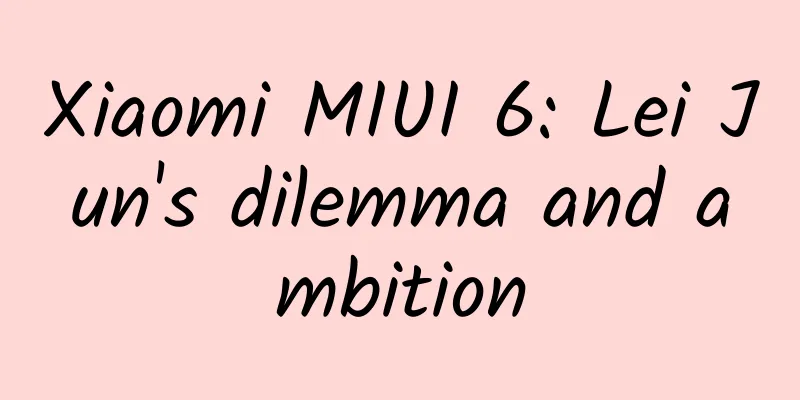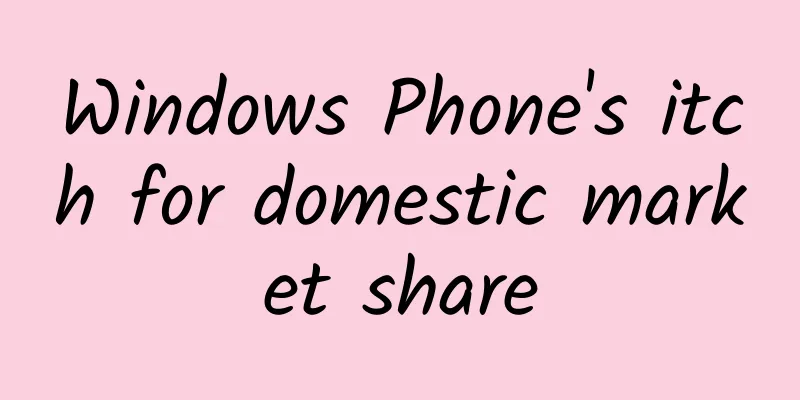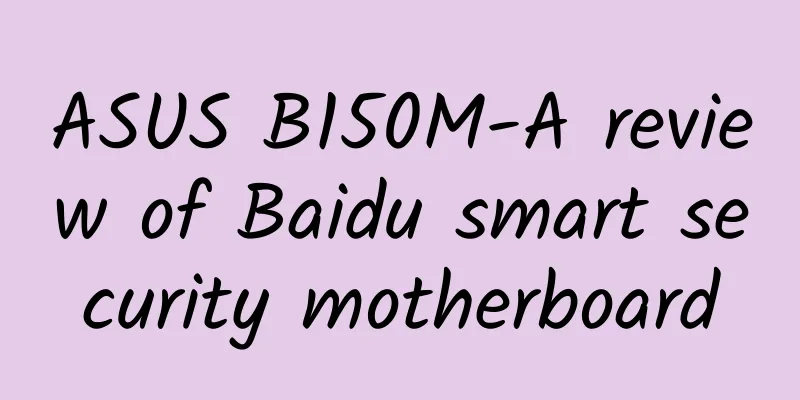Xiaomi MIUI 6: Lei Jun's dilemma and ambition

|
Xiaomi released its MIUI 6 in the form of a lollipop, which received rave reviews from the outside world. Some big accounts also teased Xiaomi, saying that some interfaces and functions were too similar to iOS, and asked Xiaomi to give Apple some respect. Some of the criticisms were even posted in the official group set up by Xiaomi PR, which was a bit embarrassing. However, in my opinion, few comments in the past two days have realized Lei Jun's true intentions, and I don't know his worries and joys. Let me talk about it. In my eyes, MIUI 6, in addition to the so-called value of the operating system, is also: 1. Xiaomi’s path out of the hardware dilemma; 2. A platform for upgrading Xiaomi’s business model; 3. A huge O2O world. Let me explain them one by one. First of all, it is a bit inappropriate to talk about Xiaomi's predicament on this festive day. However, if you can't feel Lei Jun's nervousness from MIUI 6, you really can't understand Xiaomi's way of survival. Xiaomi's dilemma is that after the release of Xiaomi 4, Lei Jun will not have much room for hardware innovation in the short term. In terms of manufacturing and process design, Xiaomi faces pressure from the entire industry chain. You know that Foxconn suffered heavy losses when it produced iPhone 5 last year due to a large amount of rework. Guo Taiming himself said that this is one of the most difficult things the company has encountered so far. If you combine this statement with Moore's Law, you will feel that the model of hardware-driven software and services is no longer feasible on the mobile phone side. In the future, mobile phone hardware will continue to innovate, but the trend of large screens and high integration will lead to increasingly similar faces of various products. In other words, in the future, Xiaomi phones will not be much better than others in terms of technology and materials. In my opinion, at the Xiaomi 4 launch conference in July, Lei Jun spent most of his time talking about the artistic journey of a piece of steel plate. My understanding is that mobile phone hardware has become quite transparent, and terminal innovation has entered a dilemma. Lei Jun's rendering of the steel plate is already a signal. How to break through the dilemma of hardware standardization trend? Lei Jun certainly had prepared for it, but before Xiaomi 4 and MIUI 6 came out, I really didn't see him having too many brushes. Why do I say that? Please continue reading my thoughts on the second point above - Xiaomi's business model upgrade. You know, Xiaomi's business model is actually very similar to Zhou Hongyi's 360. At the beginning, 360 relied on its security business for free, and provided many paid value-added services behind the scenes, and eventually became China's largest professional application distribution platform and made a lot of money. If you compare it, the hardware side of Xiaomi mobile phones is very similar to the free part. It is not as simple as creating huge cash flow, because the terminal is tangible, which means that it occupies tens of millions of user entrances at cost price, and Xiaomi also opens the door to application distribution. You know, in the past, apart from hardware, Xiaomi's real core competitiveness lies in this part of value-added services. The social marketing that you mentioned about Xiaomi is just to create opportunities and consumption interfaces for this part, making you feel that its brand influence is everywhere. Why is MIUI 6 considered as a platform for upgrading Xiaomi's business model? Haha, I have to go on for a while, don't bother me. Do you still remember that Zhou Hongyi and Lei Jun released the Smart Key and Mi Key one after another a few months ago? That little thing that plugs into the earphone jack of the mobile phone has actually conveyed Lei Jun and others' anxiety: sooner or later, the traditional smart application distribution model will come to an end. Because the mobile phone interface, as an entry point, has many space and visual limitations. Smartphone screens are getting bigger and bigger, but there is always a limit. The more applications are integrated, the more bloated the directories and levels behind them will become, which will eventually lead to most applications being used less frequently or even not activated, becoming software garbage and weakening the user experience. This is also the misunderstanding and dilemma of the current smartphone and even the entire mobile Internet application distribution. Don’t think that a large screen, complex functions, and many apps are good, because that will make it more difficult to use than a PC. The application center of the Android system is scattered and messy. Almost every mobile phone manufacturer has built its own application store, claiming to be a "platform", but in fact it is highly homogenized and has little effect. Some manufacturers have introduced mobile search engines on the mobile phone side, combined with browsers, and engaged in application bidding ranking, which has further aggravated the market differentiation. Developers cannot make money on it, and most of them lose money. This is the reality. I wrote some time ago that this trend has begun to reverse. Many big brands, including Samsung, have closed many application channels in different segments and started to rely on independent and open third-party application platforms. Even Apple executives admit that its application platform has already seen marginal effects. Yes, the number of mobile Internet shopping apps is not very meaningful. You are not choosing for users, but kidnapping developers and users, and the market is not free. Xiaomi Mi Key and 360 Smart Key can create a convenient entrance for frequently used applications and a one-click experience. However, while creating a convenient channel, it creates redundant hardware and implicit costs. Therefore, this is just a transitional measure, reflecting the dilemma of the business model. So, what does MIUI 6 bring? You can see the means it uses to resolve this dilemma. MIUI head Hong Feng keeps saying that the design philosophy of MIUI 6 is: "Content is the essence." I don't think many media people really understand the meaning of this sentence. The so-called content is actually applications and services. Highlighting content is to resolve the dilemma I mentioned above and give the right of choice back to users. MIUI 6 resolves the dilemma by: flattening the hierarchy, integrating mobile search, integrating application functions into the system, and enhancing cloud services with the help of the open Internet. In other words, it gives more opportunities for applications and services that have been deposited on the platform in the past, and makes full use of the open network and big data to meet the most rigid needs of users. Here, I am most optimistic about two points, which are the integration of application functions into the system and cloud services. The former belongs to system-level integration, similar to Microsoft's invisible integration of applications into its own operating system. MIUI 6 is also the same. When Hong Feng emphasized that this system-level service integrates various security solutions and application solutions, I thought of Zhou Hongyi at that moment. Haha, think about it, MIUI 6 embeds 360's main business into the system, which is equivalent to giving it OTT (over-the-top pass). I believe that Lei Jun and Zhou Hongyi, two Hubei natives who have been competing in the security field for many years, will once again perform a duet. However, this time, Zhou Hongyi may suffer internal injuries - at least in the consumer field. I have strayed off topic. Let's go back to the overall design of MIUI 6. I don't want to elaborate on it, it's too long-winded. From this perspective, I just want to add a comment from Mr. Yang Xingping, the former founder of Dopod, on Apple: Apple creates needs that will not disappear with the passage of time. So, is Xiaomi MIUI 6 only good enough in terms of design? It is far from enough. Not to mention that the mobile search technology behind it is someone else's, even if it minimizes the time between applications and users, it can only play a very limited role in the mobile phone UI. The most important thing is that if the applications and services distributed by Xiaomi do not innovate and remain in areas such as games, although Xiaomi's business model will be upgraded, it will still be struggling in a space where the end is foreseeable. So, what does Lei Jun want to do with MIUI 6? This is the third question I want to answer. That is, Xiaomi wants to build a huge mobile O2O platform. Do you remember that last year, there was a rumor that Xiaomi was going to raise funds and Tencent might join the game? Then Xiaomi refuted the rumor, and some people said that the two companies could not cooperate and Xiaomi might become a rival of Tencent in the future. Many people thought it was a joke at the time. Now, I really don’t find it funny. I even think that the entire BAT camp should face up to Lei Jun. Last month, I went to Beijing to attend the Xiaomi 4 launch conference. Lei Jun was the only one presenting from beginning to end. He spent two-thirds of the time talking about a piece of steel plate. What did he spend the rest of the time talking about? It was all kinds of practical life services, from ticketing, taxis, hospital registration, designated drivers, McDonald's express delivery to O2O services such as food, drink, entertainment, food, clothing, housing and transportation, which are full of more imagination. Don't think he's just talking. I even think that Lei Jun deliberately restrained this intention when releasing MIUI6. Hong Feng didn't hold back at the last moment. He said that MIUI 6 is to build a Xiaomi life service platform and build various Internet services for users at the system level. At present, the channel for Xiaomi's O2O services is mainly Xiaomi Yellow Pages. It has access to the data of hundreds of large partners. In the future, users will enjoy more comprehensive and convenient mobile Internet life services at the bottom of the MIUI system. When you open the Xiaomi MIUI6 calendar function, you will find that it integrates 16 life services and more than 70 subscription services. Xiaomi has bundled life services behind almost every application. I am not exaggerating when I say this. MIUI6 is Lei Jun's ambition and dream. Xiaomi is a mobile Internet platform that transcends the existing BAT and various life service providers in the form of OTT. If you still think that Lei Jun is just a guy who sells mobile phones and distributes applications, you really underestimate him. If you understand the design philosophy of MIUI6, that is, "content is the essence", from this level, you will have a richer experience. You may ask, will Xiaomi's O2O path be successful? I dare not say. However, as of now, MIUI users have exceeded 70 million. In China, the user base activity has surpassed Apple iPhone and other Android phones, ranking first in China's smartphones. Yesterday, I took a taxi from a place in Beijing to the airport. A young taxi driver was listening to storytelling on Xiaomi's Redmi and talked about the experience of Xiaomi. He was really eloquent. This gave me a new understanding of Xiaomi's development of grassroots users: in China, it is only a matter of time before Xiaomi beats Apple. Because when an industry matures, only local companies that are familiar with local life can truly provide services that meet the needs of the public. I believe that the future of Xiaomi, just like its low-profile brand and name, lies in living in people's daily lives. As for Lei Jun himself, if he wants to achieve greater success in the global Internet field, he must also be humble and accelerate the landing of Xiaomi, and integrate it more deeply and broadly into the lives of ordinary people, instead of making a few mobile phones that pretend to have a loser vibe, or distributing some applications to make some money. Let me quote again what McKinsey reported some time ago. It said that the GDP directly and indirectly created by the Internet in China, that is, iGDP, has already exceeded that of developed countries such as the United States, Europe, and Japan. I think the reason why China's BAT has entered the ranks of global Internet giants is because China has rich and vast offline resources that far surpass those of developed markets such as the United States, Europe, and Japan. This is the fertile soil for the survival of Chinese Internet companies. It can create BAT, Jack Ma, Pony Ma, and Robin Li, and it will definitely create Xiaomi and Lei Jun. I firmly believe this. Of course, Xiaomi is still far from being able to resist the giants. The huge revenue cannot cover up the thinness of its ecosystem, but from a competitive perspective, I would say that in the next few years, Jack Ma and others really have to be careful of Lei Jun, who is accelerating the implementation of O2O. This cunning Hubei man who appears to be peaceful but actually has ambitions may embarrass them from the side. As a winner of Toutiao's Qingyun Plan and Baijiahao's Bai+ Plan, the 2019 Baidu Digital Author of the Year, the Baijiahao's Most Popular Author in the Technology Field, the 2019 Sogou Technology and Culture Author, and the 2021 Baijiahao Quarterly Influential Creator, he has won many awards, including the 2013 Sohu Best Industry Media Person, the 2015 China New Media Entrepreneurship Competition Beijing Third Place, the 2015 Guangmang Experience Award, the 2015 China New Media Entrepreneurship Competition Finals Third Place, and the 2018 Baidu Dynamic Annual Powerful Celebrity. |
<<: Using Internet logic to deal with the risk of online lending
>>: Can primary school students save Nokia?
Recommend
This tree is very afraid of being tickled, go and try it!
Crape myrtle is a common garden flower and now th...
User operation, how to retain users after fission?
What I want to discuss with you this time is how ...
The "diamond" back cover plus the super AMOLED screen make the front and back of the Xiaomi Chili Pepper 7 outstanding.
When consumers buy a mobile phone, they will have...
Apple Pay will be introduced in China with iOS 8.3, and new music services are also under development
[[127737]] As usual, Apple usually releases the l...
Mr. Da Zhou's "Main Behavior Logic Training Camp"
Resource introduction of Mr. Da Zhou's "...
What do the "A, B, and C" categories of infectious diseases represent? Does that mean we don't have to worry about COVID-19 if it's not a category A?
"People died like sheep. The sick wandered n...
Is the decline inevitable? With less than 1% market share, what happened to Microsoft WP?
[[144309]] In the PC world, Microsoft is undoubte...
Surprise! If an ant falls from a plane, won’t it die?
Scan the QR code to follow Captain Da Shanzha Wan...
Spicy noodles, hotpot, chicken leg rice...Why can't some people stop eating salty food?
Everyone seems to know that eating too much salt ...
Chickenpox, which is spread through face-to-face contact, is more contagious than monkeypox? Don’t be afraid, let’s fight acne together!
Monkeypox virus has sparked heated discussions, b...
How much does it cost to inject hyaluronic acid into the nose? Chongqing SEO website promotion is not popular, how to make spiders favor it
When it comes to SEO optimization, we will find t...
The Shenzhou 13 astronauts made their first public appearance after returning from space! Review of the "highlight moments"
The Shenzhou 13 astronaut crew officially met wit...
Clinical diagnosis of depression and five practical treatments
An introduction to the clinical diagnosis of depr...
Offline event preparation and process management
Recently, I was commissioned to help coordinate a...
How do product managers write a good year-end summary? Year-end summary sample, how to write a year-end summary?
2014 has passed, and a wave of summary is approac...









